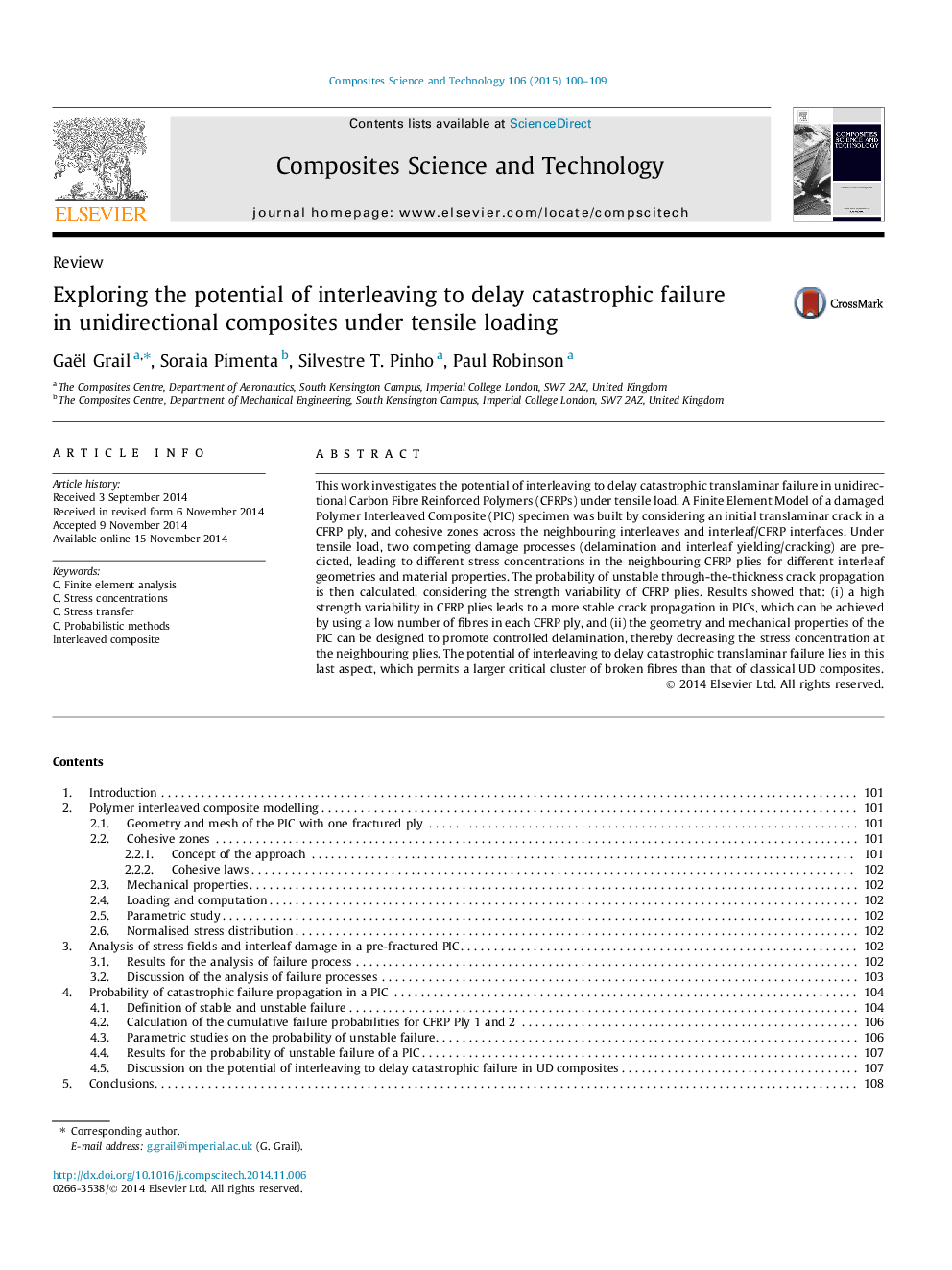| Article ID | Journal | Published Year | Pages | File Type |
|---|---|---|---|---|
| 7215594 | Composites Science and Technology | 2015 | 10 Pages |
Abstract
This work investigates the potential of interleaving to delay catastrophic translaminar failure in unidirectional Carbon Fibre Reinforced Polymers (CFRPs) under tensile load. A Finite Element Model of a damaged Polymer Interleaved Composite (PIC) specimen was built by considering an initial translaminar crack in a CFRP ply, and cohesive zones across the neighbouring interleaves and interleaf/CFRP interfaces. Under tensile load, two competing damage processes (delamination and interleaf yielding/cracking) are predicted, leading to different stress concentrations in the neighbouring CFRP plies for different interleaf geometries and material properties. The probability of unstable through-the-thickness crack propagation is then calculated, considering the strength variability of CFRP plies. Results showed that: (i) a high strength variability in CFRP plies leads to a more stable crack propagation in PICs, which can be achieved by using a low number of fibres in each CFRP ply, and (ii) the geometry and mechanical properties of the PIC can be designed to promote controlled delamination, thereby decreasing the stress concentration at the neighbouring plies. The potential of interleaving to delay catastrophic translaminar failure lies in this last aspect, which permits a larger critical cluster of broken fibres than that of classical UD composites.
Keywords
Related Topics
Physical Sciences and Engineering
Engineering
Engineering (General)
Authors
Gaël Grail, Soraia Pimenta, Silvestre T. Pinho, Paul Robinson,
